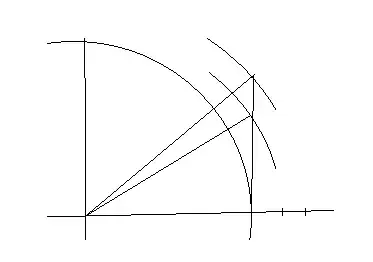So, I once read somewhere that if: $y = \tan x, \quad\frac{dy}{dx}=\sec^2x$.
I think I have found the proof, but I am not so sure.
Recall the identity:
$$\tan x \equiv \frac{\sin x}{\cos x}$$
Recall the quotient rule:
(where $u$ and $v$ are each functions:) $$y=\frac{u}{v}, \quad \frac{dy}{dx}=\frac{v * \frac{du}{dx}-u* \frac{dv}{dx}}{v^2}$$
I did:
$u=\sin x$
$v = \cos x$
$\frac{du}{dx} = \cos x$
$\frac{dv}{dx} = -\sin x$
I believe that if you substitute all these values in, you get:
$$\frac{\cos^2x + \sin^2x}{\cos^2x}$$
Recall the identity:
$$\sin^2x + \cos^2x \equiv 1$$
This is the case on the top so:
$$\frac{dy}{dx}=\frac{1}{\cos^2x}$$
On the same webpage that I found these identities in, I also found that:
$$\sec^2x \equiv\frac{1}{\cos^2x}$$
This means that $$\frac{dy}{dx}=\sec^2x \equiv\frac{1}{\cos^2x}$$
But why does $\frac{1}{\cos^2x} \equiv \sec^2x $? I want a proof that the $\sec \leftarrow \rightarrow \cos$ identity works. From my research, not much has touched on this, so how is it provable that $\frac{dy}{dx}$ of $\tan x = \sec x^2$?
P.S. I have a hunch that it is something that is taken for granted, and that we don't necessarily have to know this.
P.P.S. Could you check this proof for me, and state if I have missed any steps?
